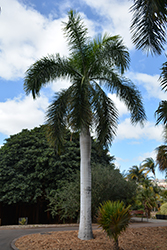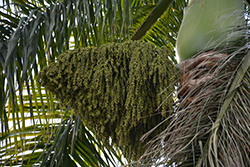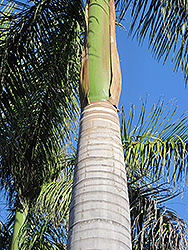Fri & Sat 8am - 8pm
Sun 8am - 7pm
Anytown, USA 12345
fax: 261.787.0463
e-mail: info@successgc.com


Plant Finder

Height: 100 feet
Spread: 20 feet
Sunlight:
![]()
Hardiness Zone: 10a
Other Names: Cuban Royal Palm
Description:
A magnificent, massive palm with a tall column-like trunk topped with a superb green crownshaft, supporting attractive, arching feather-like green leaves; a wonderful vertical accent tree in warm urban landscapes
Ornamental Features
Florida Royal Palm has attractive dark green evergreen foliage on a tree with the bulk of the canopy held atop a towering trunk or stem. The large narrow pinnately compound leaves are highly ornamental and remain dark green throughout the winter. It has masses of beautiful panicles of creamy white flowers hanging below the branches from late winter to early spring, which are most effective when planted in groupings. It produces bluish-green berries with brick red overtones from mid summer to early fall, which fade to black over time. The fruit can be messy if allowed to drop on the lawn or walkways, and may require occasional clean-up. The smooth gray bark is extremely showy and adds significant winter interest.
Landscape Attributes
Florida Royal Palm is an open evergreen tree with a strong central leader and a towering form, with a high canopy of foliage concentrated at the top of the plant. Its average texture blends into the landscape, but can be balanced by one or two finer or coarser trees or shrubs for an effective composition.
This tree will require occasional maintenance and upkeep, and usually looks its best without pruning, although it will tolerate pruning. It is a good choice for attracting birds to your yard. Gardeners should be aware of the following characteristic(s) that may warrant special consideration;
- Insects
Florida Royal Palm is recommended for the following landscape applications;
- Accent
- Vertical Accent
Planting & Growing
Florida Royal Palm will grow to be about 100 feet tall at maturity, with a spread of 20 feet. It has a high canopy of foliage that sits well above the ground, and should not be planted underneath power lines. As it matures, the lower branches of this tree can be strategically removed to create a high enough canopy to support unobstructed human traffic underneath. It grows at a fast rate, and under ideal conditions can be expected to live to a ripe old age of 150 years or more; think of this as a heritage tree for future generations!
This tree should only be grown in full sunlight. It is very adaptable to both dry and moist growing conditions, but will not tolerate any standing water. It is considered to be drought-tolerant, and thus makes an ideal choice for xeriscaping or the moisture-conserving landscape. This plant should not require much in the way of fertilizing once established, although it may appreciate a shot of general-purpose fertilizer from time to time early in the growing season. It is not particular as to soil pH, but grows best in rich soils, and is able to handle environmental salt. It is highly tolerant of urban pollution and will even thrive in inner city environments. This species is native to parts of North America.


